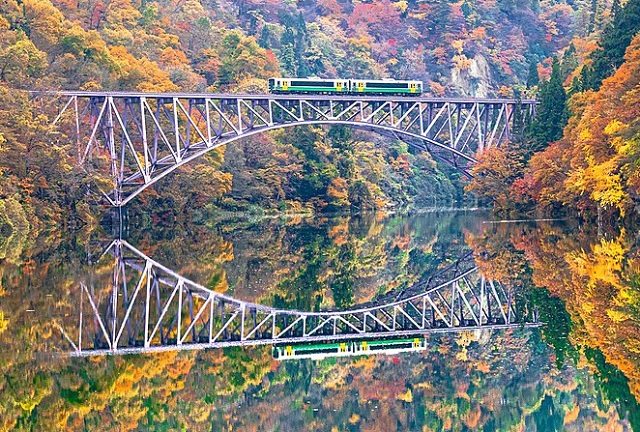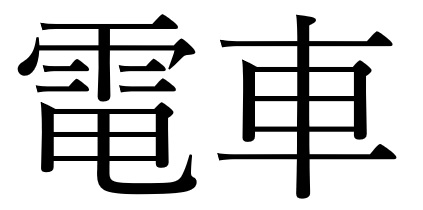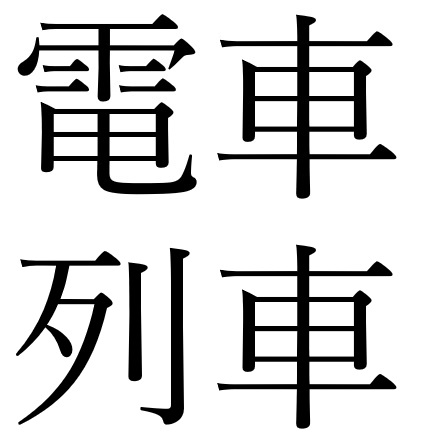Japanese public broadcaster issues apology for calling a train a “train”

Rail otaku take NHK to task.
October 1 is going to be a big day for the Tadami train line (pictured above), which runs from Fukushima Prefecture to Niigata Prefecture. Since being hit by heavy rainstorms in the summer of 2011, nearly the entire line, specifically the 88.4-kilometer (54.9-mile) section between Aizu-Wakamatsu and Tadami Stations, has been shut down. Repairs are finally nearing completion, though, and after a decade-plus wait, service is set to resume at the beginning of next month.
Rail operator JR East has already begun test runs ahead of the public reopening, and Japanese public broadcaster NHK was eager to share footage of the long-awaited return of rolling stock to the line, with NHK Fukushima posting this video to its official Twitter account…
昨日のツイートで『列車』と表記すべきところを、誤って『電車』と表記してしまいました。お詫びして訂正いたします。 https://t.co/HnxJOM3fKX
— NHK福島放送局 (@nhk_fukushima) September 7, 2022
…along with this message.
“A test run event ahead of the Tadami Line’s reopening! It was a touching sight to see a train running on this section of the line, which has been shut down for 11 years.”
Seems pretty straightforward, right? And yet, NHK would soon have to issue a correction and an apology for an inaccuracy in the statement. Yes, that’s the Tadami Line in the video, and yes, it’s been shut own for 11 years. However, the vehicle shown is not “a train,” or at least not the kind of train NHK said it was.
The Japanese word that NHK used was densha, which might not seem it should cause any sort of commotion. If you’re studying Japanese, the first word your textbook is going to teach you for “train” is densha, and that’s also likely to be the first entry you’ll find for “train” in an English-to-Japanese dictionary. But while all densha are trains, not all trains are densha. Let’s take a look at the kanji characters densha is written with.

We’ll start with the second character. 車 is read as sha and originally means “cart,” but in modern contexts can also mean “car,” both in terms of an automobile and a train car, so there’s no problem there. The first kanji, though, 電/den, means “electricity,” and so the word densha refers specifically to a train that runs on electricity.
The problem, though, is that the train seen running on the Tadami Line in NHK’s video isn’t electric. It’s diesel, and so it’s not a densha, but a ressha, a word that can be used for trains of any type.
▼ Densha (top) and ressha (bottom). Ressha’s kanji translate literally as “column car.”

Shortly after posting the video, the thread was flooded with responses from rail fans rapidly pointing out the incorrect terminology.
“Densha?????
“So that’s a densha, huh?”
“Den…sha?”
“I don’t see any power lines for electricity.”
“Wow, what a cool DENSHA!”
“Such a lovely truck.”
“To us train otaku, this feels like disparaging treatment of a diesel train.”
“That’s not a densha. The difference is as big as the one between gyudon [beef bowls] and butadon [pork bowls].”
The next morning, NHK tweeted an apology.
昨日のツイートで『列車』と表記すべきところを、誤って『電車』と表記してしまいました。お詫びして訂正いたします。 https://t.co/HnxJOM3fKX
— NHK福島放送局 (@nhk_fukushima) September 7, 2022
“In our tweet yesterday we should have used the word ressha, not densha. We apologize and offer this correction.”
In NHK’s defense, densha are by far the type of train the vast majority of Japanese people are most familiar with, as most commuter trains in urban/suburban areas are electric, and in casual conversation it’s not uncommon for people to use “densha” as a catch-all for trains in general. Still, densha is indeed the wrong term for the type of train shown in the video, and given the inherent interest rail otaku were going to have in the story, it’s not a shock that they’d needle NHK for the mistake.
But hey, at least the screw-up wasn’t as big as calling a Gundam a Transformer.
Source: Twitter/@nhk_fukushima (1, 2) via Otakomu
Top image: Wikipedia/ Wikipedia/Agakambara
● Want to hear about SoraNews24’s latest articles as soon as they’re published? Follow us on Facebook and Twitter!
Credit:

0 comments: